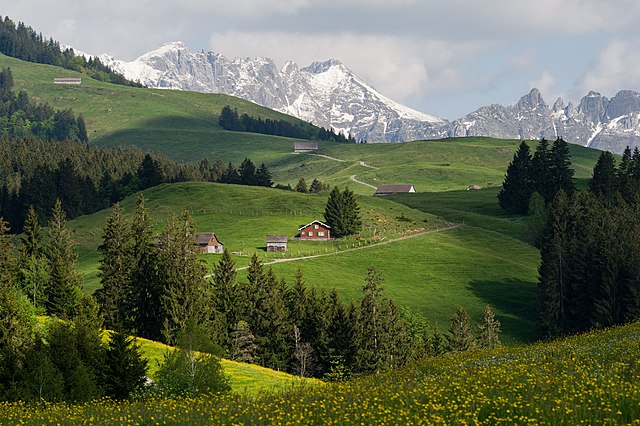Cultural landscape is a term used in the fields of geography, ecology, and heritage studies, to describe a symbiosis of human activity and environment. As defined by the World Heritage Committee, it is the "cultural properties [that] represent the combined works of nature and of man" and falls into three main categories:"a landscape designed and created intentionally by man"
an "organically evolved landscape" which may be a "relict landscape" or a "continuing landscape"
an "associative cultural landscape" which may be valued because of the "religious, artistic or cultural associations of the natural element."
Neckertal pasture hillside Switzerland.
Uluṟu-Kata Tjuṯa National Park, sacred landscape of the aboriginal Australian, classified as "cultural landscape" by Unesco
Tongariro Mahuia River in the Tongariro National Park, New Zealand
The Batad rice terraces, The Rice Terraces of the Philippine Cordilleras, the first site to be included in the UNESCO World Heritage List cultural landscape category in 1995.
A landscape is the visible features of an area of land, its landforms, and how they integrate with natural or human-made features, often considered in terms of their aesthetic appeal. A landscape includes the physical elements of geophysically defined landforms such as mountains, hills, water bodies such as rivers, lakes, ponds and the sea, living elements of land cover including indigenous vegetation, human elements including different forms of land use, buildings, and structures, and transitory elements such as lighting and weather conditions. Combining both their physical origins and the cultural overlay of human presence, often created over millennia, landscapes reflect a living synthesis of people and place that is vital to local and national identity.
A prairie: Badlands National Park, South Dakota
Tropical rainforest, Fatu Hiva Island, Marquesas Islands, French Polynesia
Tundra in Siberia
Taiga (boreal forest), Alaska








